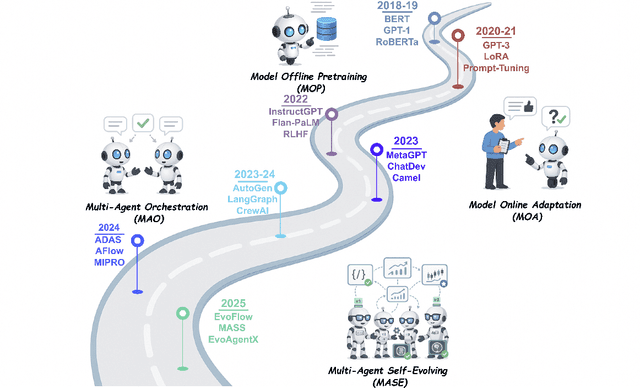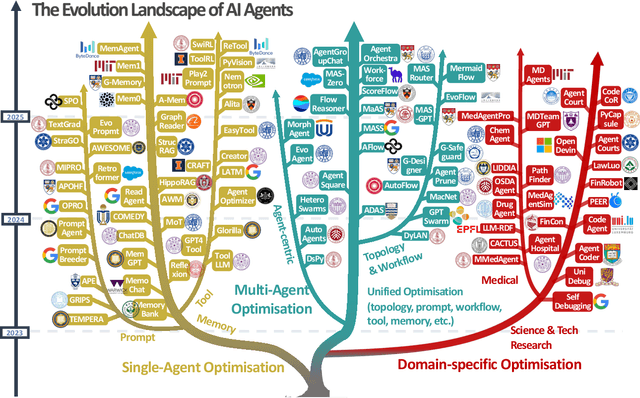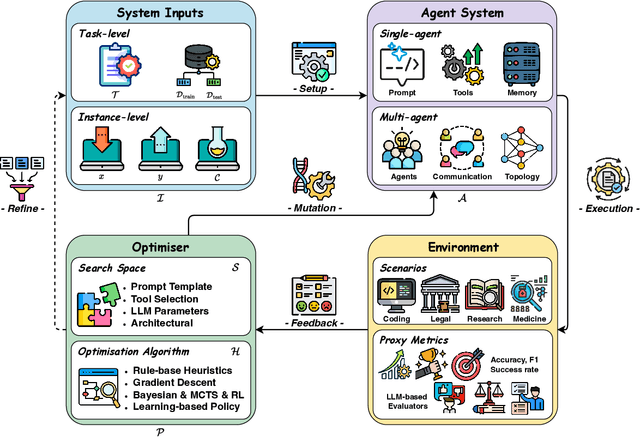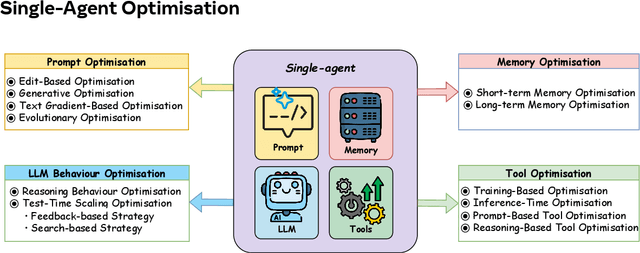Han Zhou
From Human Hands to Robot Arms: Manipulation Skills Transfer via Trajectory Alignment
Oct 01, 2025Abstract:Learning diverse manipulation skills for real-world robots is severely bottlenecked by the reliance on costly and hard-to-scale teleoperated demonstrations. While human videos offer a scalable alternative, effectively transferring manipulation knowledge is fundamentally hindered by the significant morphological gap between human and robotic embodiments. To address this challenge and facilitate skill transfer from human to robot, we introduce Traj2Action,a novel framework that bridges this embodiment gap by using the 3D trajectory of the operational endpoint as a unified intermediate representation, and then transfers the manipulation knowledge embedded in this trajectory to the robot's actions. Our policy first learns to generate a coarse trajectory, which forms an high-level motion plan by leveraging both human and robot data. This plan then conditions the synthesis of precise, robot-specific actions (e.g., orientation and gripper state) within a co-denoising framework. Extensive real-world experiments on a Franka robot demonstrate that Traj2Action boosts the performance by up to 27% and 22.25% over $\pi_0$ baseline on short- and long-horizon real-world tasks, and achieves significant gains as human data scales in robot policy learning. Our project website, featuring code and video demonstrations, is available at https://anonymous.4open.science/w/Traj2Action-4A45/.
ArgusCogito: Chain-of-Thought for Cross-Modal Synergy and Omnidirectional Reasoning in Camouflaged Object Segmentation
Aug 25, 2025Abstract:Camouflaged Object Segmentation (COS) poses a significant challenge due to the intrinsic high similarity between targets and backgrounds, demanding models capable of profound holistic understanding beyond superficial cues. Prevailing methods, often limited by shallow feature representation, inadequate reasoning mechanisms, and weak cross-modal integration, struggle to achieve this depth of cognition, resulting in prevalent issues like incomplete target separation and imprecise segmentation. Inspired by the perceptual strategy of the Hundred-eyed Giant-emphasizing holistic observation, omnidirectional focus, and intensive scrutiny-we introduce ArgusCogito, a novel zero-shot, chain-of-thought framework underpinned by cross-modal synergy and omnidirectional reasoning within Vision-Language Models (VLMs). ArgusCogito orchestrates three cognitively-inspired stages: (1) Conjecture: Constructs a strong cognitive prior through global reasoning with cross-modal fusion (RGB, depth, semantic maps), enabling holistic scene understanding and enhanced target-background disambiguation. (2) Focus: Performs omnidirectional, attention-driven scanning and focused reasoning, guided by semantic priors from Conjecture, enabling precise target localization and region-of-interest refinement. (3) Sculpting: Progressively sculpts high-fidelity segmentation masks by integrating cross-modal information and iteratively generating dense positive/negative point prompts within focused regions, emulating Argus' intensive scrutiny. Extensive evaluations on four challenging COS benchmarks and three Medical Image Segmentation (MIS) benchmarks demonstrate that ArgusCogito achieves state-of-the-art (SOTA) performance, validating the framework's exceptional efficacy, superior generalization capability, and robustness.
A Comprehensive Survey of Self-Evolving AI Agents: A New Paradigm Bridging Foundation Models and Lifelong Agentic Systems
Aug 10, 2025



Abstract:Recent advances in large language models have sparked growing interest in AI agents capable of solving complex, real-world tasks. However, most existing agent systems rely on manually crafted configurations that remain static after deployment, limiting their ability to adapt to dynamic and evolving environments. To this end, recent research has explored agent evolution techniques that aim to automatically enhance agent systems based on interaction data and environmental feedback. This emerging direction lays the foundation for self-evolving AI agents, which bridge the static capabilities of foundation models with the continuous adaptability required by lifelong agentic systems. In this survey, we provide a comprehensive review of existing techniques for self-evolving agentic systems. Specifically, we first introduce a unified conceptual framework that abstracts the feedback loop underlying the design of self-evolving agentic systems. The framework highlights four key components: System Inputs, Agent System, Environment, and Optimisers, serving as a foundation for understanding and comparing different strategies. Based on this framework, we systematically review a wide range of self-evolving techniques that target different components of the agent system. We also investigate domain-specific evolution strategies developed for specialised fields such as biomedicine, programming, and finance, where optimisation objectives are tightly coupled with domain constraints. In addition, we provide a dedicated discussion on the evaluation, safety, and ethical considerations for self-evolving agentic systems, which are critical to ensuring their effectiveness and reliability. This survey aims to provide researchers and practitioners with a systematic understanding of self-evolving AI agents, laying the foundation for the development of more adaptive, autonomous, and lifelong agentic systems.
AU-IQA: A Benchmark Dataset for Perceptual Quality Assessment of AI-Enhanced User-Generated Content
Aug 07, 2025Abstract:AI-based image enhancement techniques have been widely adopted in various visual applications, significantly improving the perceptual quality of user-generated content (UGC). However, the lack of specialized quality assessment models has become a significant limiting factor in this field, limiting user experience and hindering the advancement of enhancement methods. While perceptual quality assessment methods have shown strong performance on UGC and AIGC individually, their effectiveness on AI-enhanced UGC (AI-UGC) which blends features from both, remains largely unexplored. To address this gap, we construct AU-IQA, a benchmark dataset comprising 4,800 AI-UGC images produced by three representative enhancement types which include super-resolution, low-light enhancement, and denoising. On this dataset, we further evaluate a range of existing quality assessment models, including traditional IQA methods and large multimodal models. Finally, we provide a comprehensive analysis of how well current approaches perform in assessing the perceptual quality of AI-UGC. The access link to the AU-IQA is https://github.com/WNNGGU/AU-IQA-Dataset.
NTIRE 2025 Image Shadow Removal Challenge Report
Jun 18, 2025Abstract:This work examines the findings of the NTIRE 2025 Shadow Removal Challenge. A total of 306 participants have registered, with 17 teams successfully submitting their solutions during the final evaluation phase. Following the last two editions, this challenge had two evaluation tracks: one focusing on reconstruction fidelity and the other on visual perception through a user study. Both tracks were evaluated with images from the WSRD+ dataset, simulating interactions between self- and cast-shadows with a large number of diverse objects, textures, and materials.
NeSyPack: A Neuro-Symbolic Framework for Bimanual Logistics Packing
Jun 06, 2025Abstract:This paper presents NeSyPack, a neuro-symbolic framework for bimanual logistics packing. NeSyPack combines data-driven models and symbolic reasoning to build an explainable hierarchical system that is generalizable, data-efficient, and reliable. It decomposes a task into subtasks via hierarchical reasoning, and further into atomic skills managed by a symbolic skill graph. The graph selects skill parameters, robot configurations, and task-specific control strategies for execution. This modular design enables robustness, adaptability, and efficient reuse - outperforming end-to-end models that require large-scale retraining. Using NeSyPack, our team won the First Prize in the What Bimanuals Can Do (WBCD) competition at the 2025 IEEE International Conference on Robotics and Automation.
Revisiting Reweighted Risk for Calibration: AURC, Focal Loss, and Inverse Focal Loss
May 29, 2025Abstract:Several variants of reweighted risk functionals, such as focal losss, inverse focal loss, and the Area Under the Risk-Coverage Curve (AURC), have been proposed in the literature and claims have been made in relation to their calibration properties. However, focal loss and inverse focal loss propose vastly different weighting schemes. In this paper, we revisit a broad class of weighted risk functions commonly used in deep learning and establish a principled connection between these reweighting schemes and calibration errors. We show that minimizing calibration error is closely linked to the selective classification paradigm and demonstrate that optimizing a regularized variant of the AURC naturally leads to improved calibration. This regularized AURC shares a similar reweighting strategy with inverse focal loss, lending support to the idea that focal loss is less principled when calibration is a desired outcome. Direct AURC optimization offers greater flexibility through the choice of confidence score functions (CSFs). To enable gradient-based optimization, we introduce a differentiable formulation of the regularized AURC using the SoftRank technique. Empirical evaluations demonstrate that our AURC-based loss achieves competitive class-wise calibration performance across a range of datasets and model architectures.
SEW: Self-Evolving Agentic Workflows for Automated Code Generation
May 24, 2025Abstract:Large Language Models (LLMs) have demonstrated effectiveness in code generation tasks. To enable LLMs to address more complex coding challenges, existing research has focused on crafting multi-agent systems with agentic workflows, where complex coding tasks are decomposed into sub-tasks, assigned to specialized agents. Despite their effectiveness, current approaches heavily rely on hand-crafted agentic workflows, with both agent topologies and prompts manually designed, which limits their ability to automatically adapt to different types of coding problems. To address these limitations and enable automated workflow design, we propose \textbf{S}elf-\textbf{E}volving \textbf{W}orkflow (\textbf{SEW}), a novel self-evolving framework that automatically generates and optimises multi-agent workflows. Extensive experiments on three coding benchmark datasets, including the challenging LiveCodeBench, demonstrate that our SEW can automatically design agentic workflows and optimise them through self-evolution, bringing up to 33\% improvement on LiveCodeBench compared to using the backbone LLM only. Furthermore, by investigating different representation schemes of workflow, we provide insights into the optimal way to encode workflow information with text.
Visual Planning: Let's Think Only with Images
May 16, 2025Abstract:Recent advancements in Large Language Models (LLMs) and their multimodal extensions (MLLMs) have substantially enhanced machine reasoning across diverse tasks. However, these models predominantly rely on pure text as the medium for both expressing and structuring reasoning, even when visual information is present. In this work, we argue that language may not always be the most natural or effective modality for reasoning, particularly in tasks involving spatial and geometrical information. Motivated by this, we propose a new paradigm, Visual Planning, which enables planning through purely visual representations, independent of text. In this paradigm, planning is executed via sequences of images that encode step-by-step inference in the visual domain, akin to how humans sketch or visualize future actions. We introduce a novel reinforcement learning framework, Visual Planning via Reinforcement Learning (VPRL), empowered by GRPO for post-training large vision models, leading to substantial improvements in planning in a selection of representative visual navigation tasks, FrozenLake, Maze, and MiniBehavior. Our visual planning paradigm outperforms all other planning variants that conduct reasoning in the text-only space. Our results establish Visual Planning as a viable and promising alternative to language-based reasoning, opening new avenues for tasks that benefit from intuitive, image-based inference.
NTIRE 2025 Challenge on Day and Night Raindrop Removal for Dual-Focused Images: Methods and Results
Apr 19, 2025



Abstract:This paper reviews the NTIRE 2025 Challenge on Day and Night Raindrop Removal for Dual-Focused Images. This challenge received a wide range of impressive solutions, which are developed and evaluated using our collected real-world Raindrop Clarity dataset. Unlike existing deraining datasets, our Raindrop Clarity dataset is more diverse and challenging in degradation types and contents, which includes day raindrop-focused, day background-focused, night raindrop-focused, and night background-focused degradations. This dataset is divided into three subsets for competition: 14,139 images for training, 240 images for validation, and 731 images for testing. The primary objective of this challenge is to establish a new and powerful benchmark for the task of removing raindrops under varying lighting and focus conditions. There are a total of 361 participants in the competition, and 32 teams submitting valid solutions and fact sheets for the final testing phase. These submissions achieved state-of-the-art (SOTA) performance on the Raindrop Clarity dataset. The project can be found at https://lixinustc.github.io/CVPR-NTIRE2025-RainDrop-Competition.github.io/.
 Add to Chrome
Add to Chrome Add to Firefox
Add to Firefox Add to Edge
Add to Edge